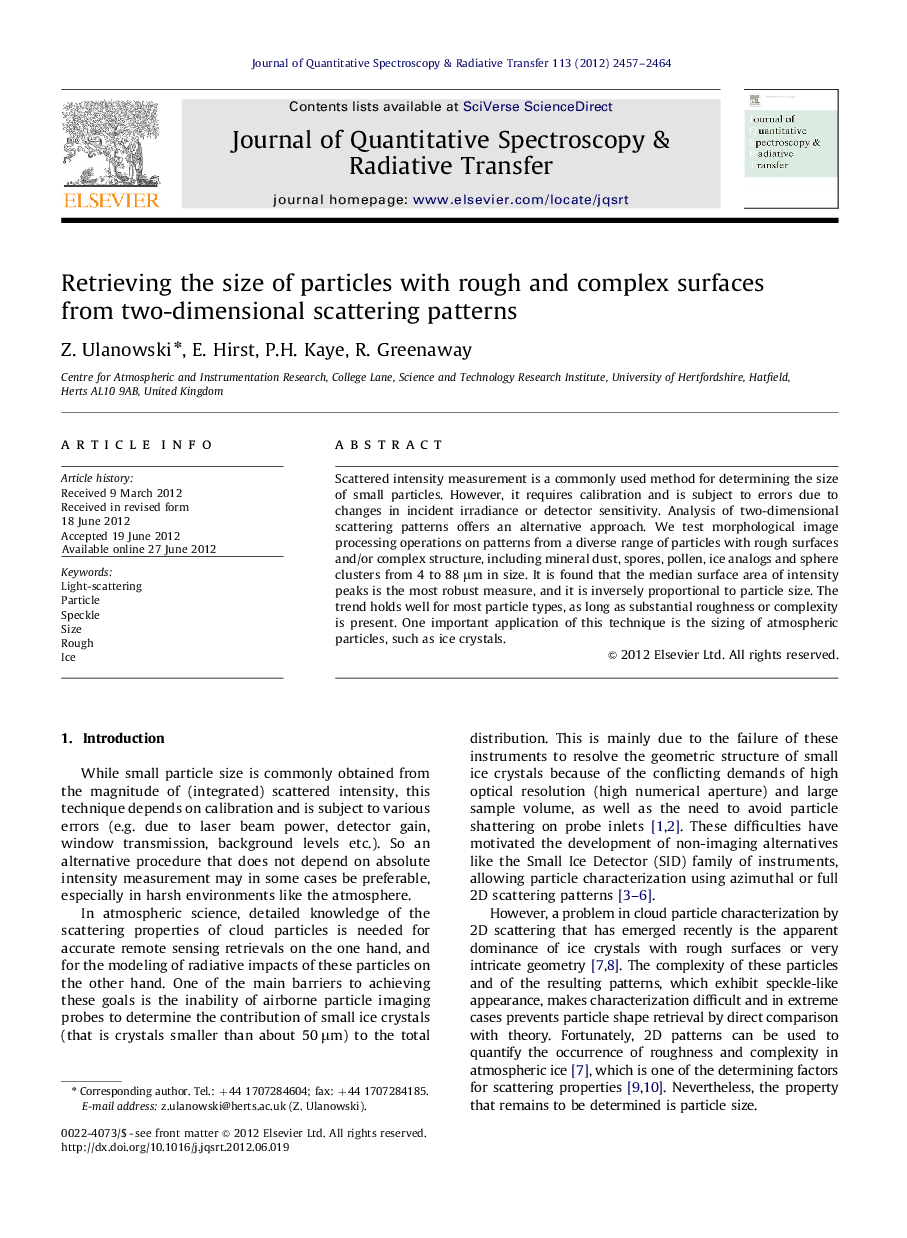| Article ID | Journal | Published Year | Pages | File Type |
|---|---|---|---|---|
| 5429107 | Journal of Quantitative Spectroscopy and Radiative Transfer | 2012 | 8 Pages |
Scattered intensity measurement is a commonly used method for determining the size of small particles. However, it requires calibration and is subject to errors due to changes in incident irradiance or detector sensitivity. Analysis of two-dimensional scattering patterns offers an alternative approach. We test morphological image processing operations on patterns from a diverse range of particles with rough surfaces and/or complex structure, including mineral dust, spores, pollen, ice analogs and sphere clusters from 4 to 88 μm in size. It is found that the median surface area of intensity peaks is the most robust measure, and it is inversely proportional to particle size. The trend holds well for most particle types, as long as substantial roughness or complexity is present. One important application of this technique is the sizing of atmospheric particles, such as ice crystals.
⺠Two-dimensional scattering patterns can be used for sizing small particles. ⺠Pattern analysis techniques are tested on patterns from a diverse range of particles. ⺠Size can be recovered provided that the particle is rough or geometrically complex. ⺠Average area of speckle spots is inversely proportional to particle size. ⺠The relationship departs from that for speckle from continuous rough surfaces.
